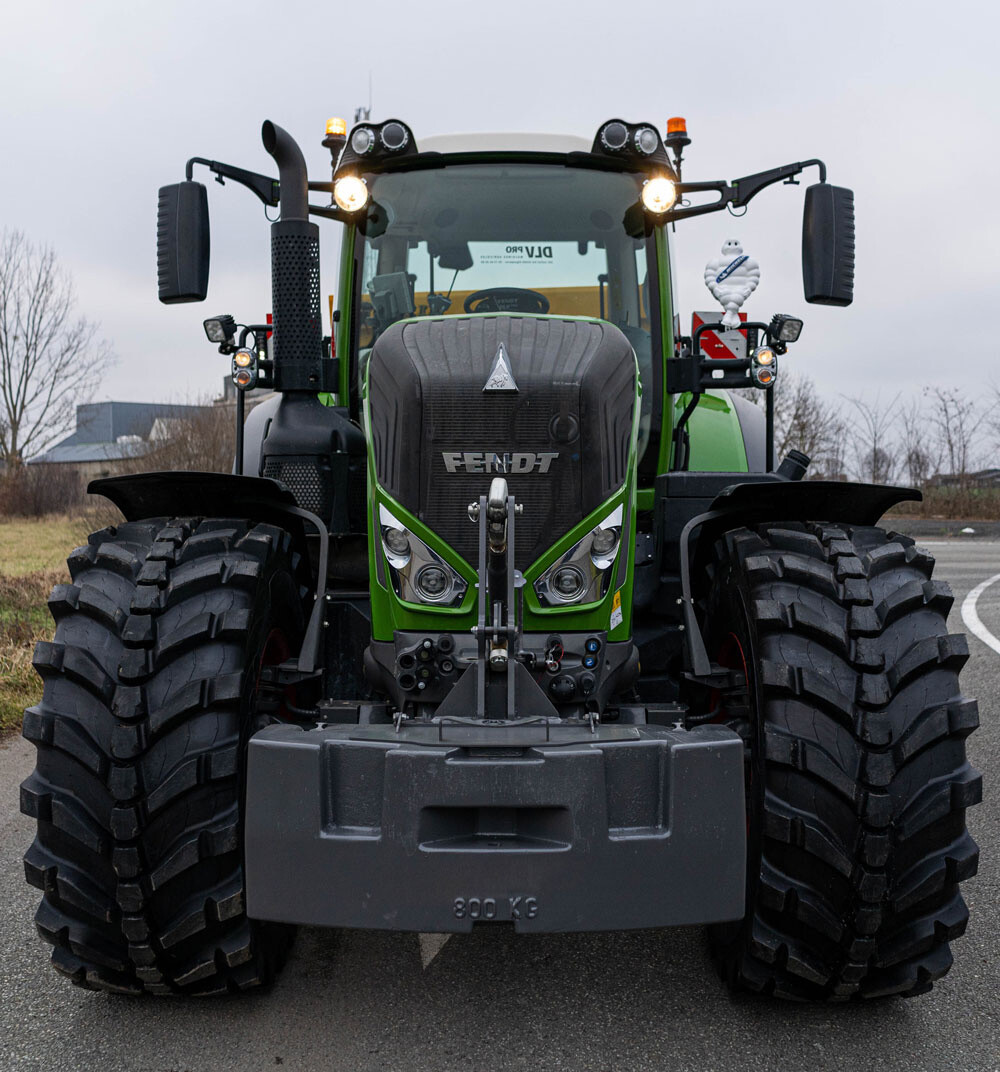
Agricultural tyre rotation for longer tyre life
Agricultural tyre rotation to support tyre longevity
SUMMARY:
What is tyre rotation?
This practice involves swapping tyres between different positions on the vehicle in order to distribute wear and mechanical stress more evenly. In this article, we will explore in detail the situations in which tyre rotation can be beneficial, as well as the advantages it offers farmers.
Tyre rotation case #1: Tractors
In certain situations, it is possible to swap the front tyres of a tractor to support their lifespan. The front tyres of a tractor can be swapped from right to left.
In countries where people drive on the right, the right tyre is generally more exposed than the left. This is because the road is often slightly cambered to facilitate water drainage, which causes the right-hand tyre to sag on the slope.
This natural inclination of the road often forces the driver to compensate by slightly adjusting the steering wheel to prevent the tractor from drifting into the roadside ditch. This constant compensation can lead to uneven tyre wear, most noticeable on the right-hand side of the tread.
So, in the event of intensive use on the road and more pronounced wear on one side, it is possible to swap the front tyres, i.e. by exchanging their right and left positions.

tyre rotation on tractors
This reduces the exposure of the right-hand tyre and helps it to wear more evenly, avoiding premature tyre replacement. In addition, even wear may help to reduce vibration and noise, supporting comfort for the driver.
Tyre rotation case #2: Twinning
Another example is twinning. As this practice is mainly used for ground work, the tyres are less stressed on the road and therefore wear less quickly.
However, it is common practice in some countries to remove tyres from the twinning to carry out other work, such as transport, which means that the inside tyres work more hours which leads to a disparity in wear. As a result, the outer tyres are less worn and therefore larger than the others, a difference in size that puts additional stress on the axle.
To ensure efficient operation of the twinning, it is recommended to maintain a proportional level of wear on all four tyres. By rotating tyres (swapping inner and outer tyres), you can compensate for this uneven wear and extend the life of the tyres. This also reduces the stress on the axle, improving the tractor's stability. What's more, even wear on the dual tyres maximises traction efficiency and reduces fuel consumption during field operations.
Tyre rotation case #3: Large articulated tractors
In the USA and Brazil, many articulated tractors are fitted with large sets of twin tyres.
This configuration generally leads to irregular wear. In fact, due to the large width of these tractors, the two outer tyres tend to dig in at the edge of the road. As a result, accentuated wear often occurs on these tyres. In such circumstances, rotating tyres is a good decision. By reversing their position (outside/inside), you should see impact on wear and extension of the life of tyres.
Tyre rotation case #4: Telescopic forklifts
Telescopic forklift trucks, which are becoming increasingly common on farms, are multi-purpose machines that perform a variety of tasks, including handling and road transport.
Some are fitted with hitches to transport straw, for example, and then return to the road. As a result, these machines are subject to intensive road use. What's more, they are often used on abrasive ground during handling work.
Nowadays, farms often have a lot of concrete and asphalt. Frequent manoeuvring on these surfaces can lead to greater wear on the front tyres, which are under greater stress because they are carrying heavier loads.

Tyre rotation on telescopic forklifts
As the front tyres are the same size as the rear tyres, you can swap them when you notice a slight imbalance between the front and rear, usually at mid-wear. In such case, rotating tyres ensures that all four wear evenly and spport their lifespan.
Tyre rotation case #5: Self-propelled sprayers
Self-propelled sprayers, with their high ground clearance and narrow tyres, are often equipped with steered axles at the front and rear, which can cause alignment problems.
It is not uncommon to notice, when following these vehicles on the road, that the four wheels are not parallel. Over time, the alignment can become slightly faulty, sometimes resulting in irregular wear patterns. To overcome this problem, it is common practice to cross the tyres, given that the four wheels are generally the same size. This practice helps to compensate for some of this wear.
Conclusion
Tyre rotation is a practice that sometimes makes it possible to limit the stress on the most worn tyre by exposing the less-worn tyre to greater stress, in the objective to extend tyre life.
However, in the event of irregular wear on your tyres, it is first essential to identify the cause. This could be due, for example, to misalignment in relation to a worn ball joint. Before rotating your tyres, we recommend that you first check the alignment and make sure there is no mechanical play.
Other articles that might interest you
Need more advice? Discover our tyre maintenance and caring guide




